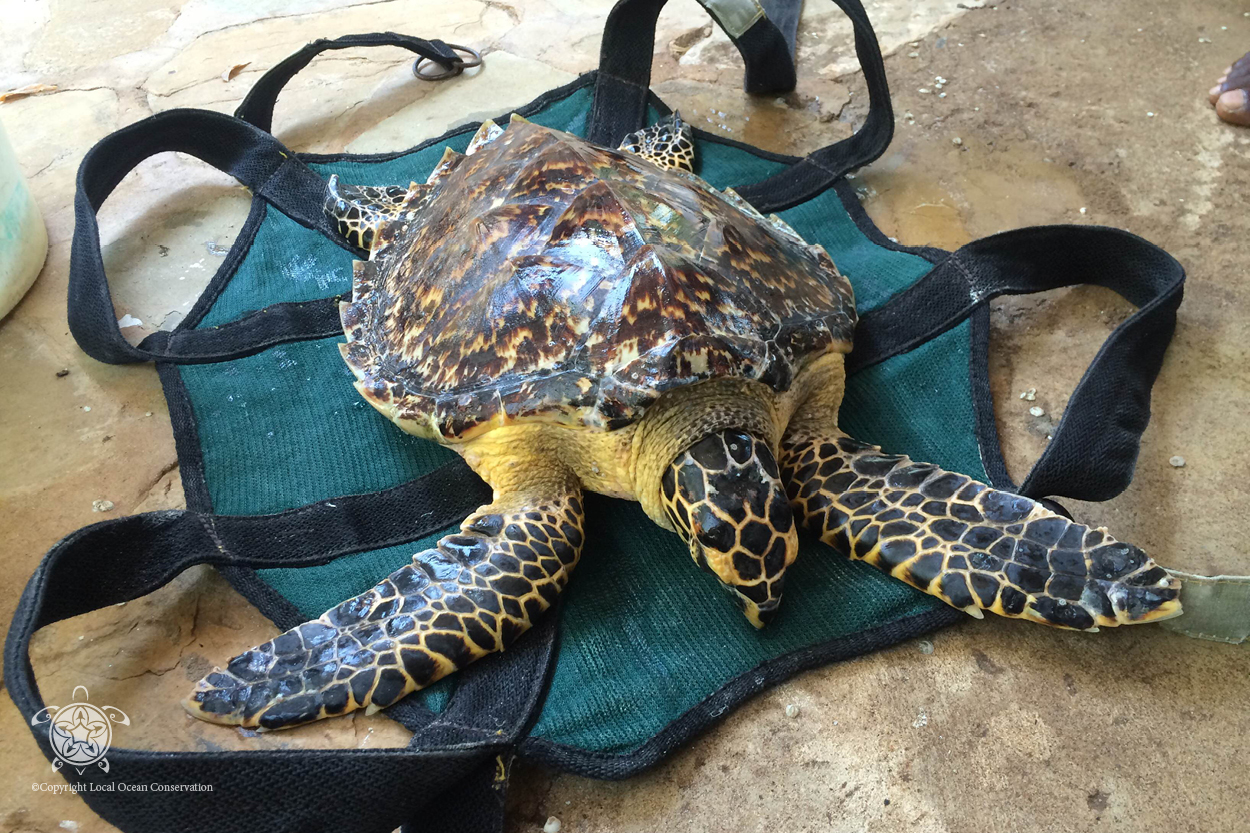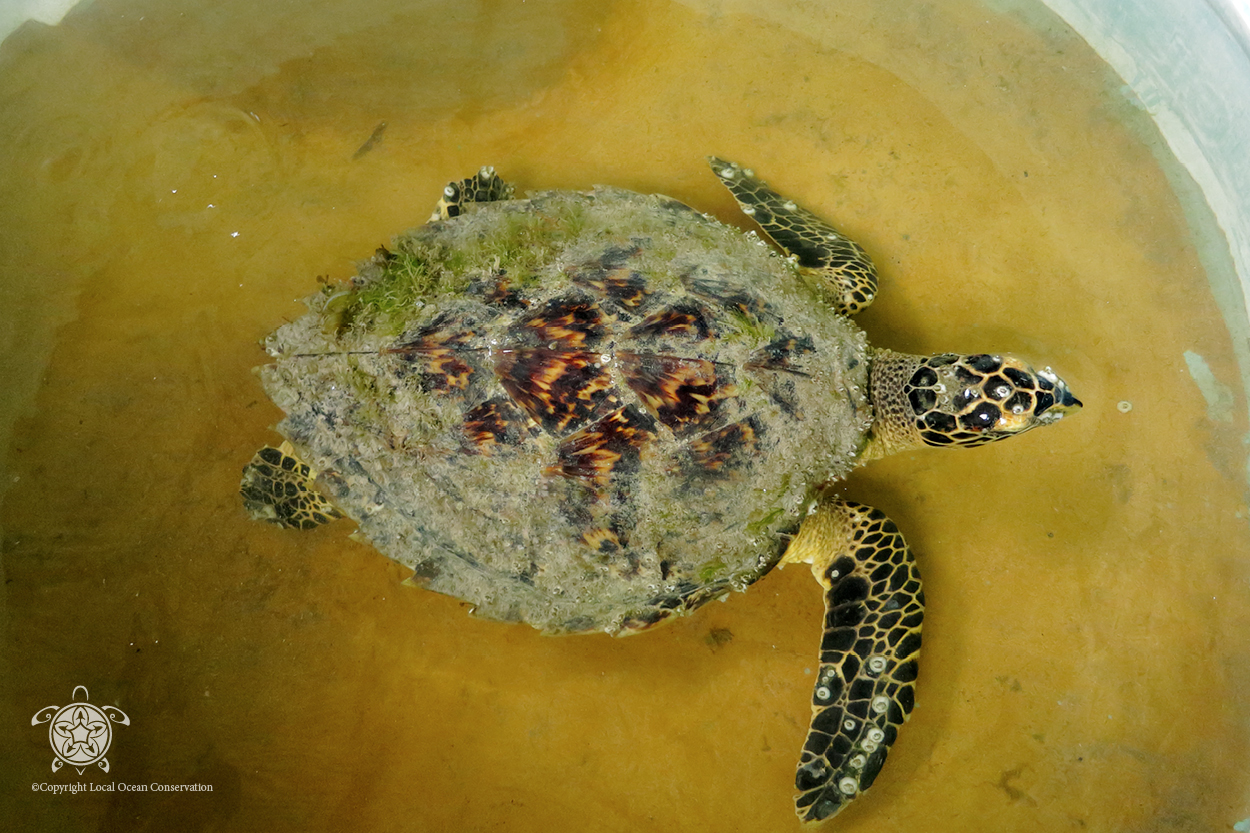Sea turtles get rid of barnacles by rubbing against hard surfaces and through natural shedding of their skin. They also seek help from fish that feed on these parasites.
Sea turtles often face the challenge of barnacles attaching to their shells. These parasites can impede their movement and cause discomfort. To remove them, sea turtles rub against rocks, coral, or other hard surfaces. This action dislodges the barnacles. Fish like cleaner wrasses also assist by feeding on the barnacles.
Natural shedding of the turtle’s skin can help eliminate these unwanted hitchhikers as well. Understanding how sea turtles manage barnacle removal highlights their adaptability and the symbiotic relationships in marine ecosystems.

Sea Turtles And Their Ecto-commensals
Sea turtles often share their shells with other organisms. These organisms, known as ecto-commensals, include barnacles, algae, and other small marine creatures. This relationship is fascinating and complex.
The Symbiotic Relationship
The relationship between sea turtles and barnacles is symbiotic. Barnacles attach to the turtle’s shell for a ride. They get food from the water as the turtle swims. This does not usually harm the turtle.
Impact Of Barnacles On Sea Turtles
Sometimes, too many barnacles can be a problem. Heavy barnacle loads can cause health issues for sea turtles. These include:
- Reduced swimming speed
- Increased energy expenditure
- Skin irritation
- Infections
To get rid of barnacles, sea turtles use several methods:
- Rubbing against rocks or coral
- Engaging in mutual cleaning with fish
- Shedding old skin and shell layers
This helps them maintain a healthy shell and stay strong.

Barnacles Explained
Barnacles are small sea creatures that attach to surfaces. They often latch onto sea turtles. This can create issues for the turtles. Understanding barnacles helps us see why they need to be removed.
Biology Of Barnacles
Barnacles are part of the crustacean family. They are related to crabs and lobsters. They have hard shells that protect their soft bodies. Barnacles filter food from the water using their feathery legs.
| Characteristic | Description |
|---|---|
| Kingdom | Animalia |
| Phylum | Arthropoda |
| Class | Crustacea |
| Order | Pedunculata |
How Barnacles Attach To Hosts
Barnacles start as tiny larvae. They swim freely in the ocean. They find a hard surface to attach to. They use a special glue to stick to the surface. This glue is very strong.
- Larvae swim in the ocean.
- Find a host like a sea turtle.
- Use glue to attach themselves.
- Grow a hard shell for protection.
Sea turtles often become hosts. Barnacles attach to their shells and skin. This can slow the turtles down. It can also cause infections. Removing barnacles is important for turtle health.
Sea Turtle’s Natural Defense Mechanisms
Sea turtles often face the challenge of barnacles attaching to their shells. These barnacles can cause discomfort and impede their movement. Fortunately, sea turtles have several natural defense mechanisms to combat this issue.
Mucus Secretion
Sea turtles produce a special type of mucus on their shells. This mucus helps prevent barnacles from sticking. The mucus creates a slippery surface, making it hard for barnacles to latch on. By secreting this mucus, sea turtles keep their shells clean and free from parasites.
Shell Shedding Process
Another defense mechanism is the shell shedding process. Over time, sea turtles shed the outer layer of their shells. This natural process removes attached barnacles. It allows the turtles to maintain a healthy and smooth shell surface.
The shedding process also helps in getting rid of other parasites. This ensures the turtle’s shell remains in good condition and free from unwanted organisms.
Both mucus secretion and shell shedding are vital for a sea turtle’s health. These natural defense mechanisms help sea turtles thrive in their ocean environment.
Behavioral Strategies Against Barnacles
Sea turtles often face the challenge of barnacle infestation. These barnacles can affect their health and movement. To combat this, sea turtles use several clever behavioral strategies. Let’s explore some of these fascinating behaviors.
Rubbing Against Surfaces
One effective way sea turtles remove barnacles is by rubbing against surfaces. They find rough objects like rocks and corals. By rubbing their shells, they dislodge barnacles. This action helps keep their shells clean.
Benefits of Rubbing:
- Removes barnacles efficiently
- Improves shell health
- Enhances movement
This method is natural and does not harm the turtle. It is a simple yet effective strategy.
Utilizing Cleaner Fish And Other Marine Life
Sea turtles also seek help from cleaner fish. These fish eat the barnacles on their shells. It’s a mutual benefit for both species. The fish get food, and the turtles get cleaned.
Other marine creatures also assist in this process. For example, some shrimp and even certain types of crabs can help.
Advantages of Using Cleaner Fish:
- Efficient and natural cleaning
- Promotes healthy marine relationships
- Reduces stress for turtles
These strategies showcase the sea turtles’ adaptability and resourcefulness. They ensure the turtles remain healthy and active.
Human Interventions In Barnacle Removal
Sea turtles often face problems with barnacles. These pesky hitchhikers can cause health issues for the turtles. Human interventions play a crucial role in helping these marine creatures. Let’s explore the various methods used in barnacle removal.
Rescue And Rehabilitation Efforts
Many organizations are dedicated to rescuing sea turtles. These organizations help turtles affected by barnacles. They work tirelessly to ensure the turtles’ well-being.
In rescue centers, experts assess the condition of the turtle. They check the severity of the barnacle infestation. Based on their findings, they decide the best course of action.
Rescue teams use various tools to aid the turtles. They ensure the turtles are comfortable and stress-free during the process.
Manual Removal Techniques
Manual removal of barnacles is a common practice. Experts carefully remove barnacles from the turtle’s shell. This process requires precision and care.
Tools like tweezers and scrapers are often used. These tools help in gently detaching the barnacles. The process is done slowly to avoid harming the turtle.
After removing the barnacles, experts clean the shell. They use antiseptic solutions to prevent infections. This ensures the turtle’s shell remains healthy.
Manual removal can be time-consuming. But it is effective in providing relief to the turtles. The turtles are then monitored to ensure they recover fully.
| Intervention Type | Description |
|---|---|
| Rescue and Rehabilitation | Assessment and care in specialized centers |
| Manual Removal | Using tools to gently remove barnacles |
The Role Of Environmental Factors
Sea turtles often deal with barnacle infestations. Environmental factors play a key role in this process. These factors can help or hinder the removal of barnacles from their shells.
Water Temperature And Barnacle Growth
Water temperature directly affects barnacle growth. Warmer waters lead to faster barnacle growth. This means sea turtles in warm waters face more barnacles.
Cold waters slow barnacle growth. Sea turtles in cooler waters have fewer barnacles. Temperature changes can impact barnacle attachment and growth rates.
| Water Temperature | Barnacle Growth Rate |
|---|---|
| Warm | Fast |
| Cold | Slow |
Migration Patterns Affecting Barnacle Infestation
Sea turtles migrate long distances. These journeys affect barnacle infestations. When turtles swim through different waters, they encounter various barnacle types.
- In warm waters, barnacles grow quickly.
- In cold waters, barnacles grow slowly.
During migration, turtles may scrape against rocks or coral. This helps remove barnacles from their shells. Strong ocean currents also assist in barnacle removal.
Migration patterns expose turtles to different environments. These environments affect barnacle growth and removal.
Impact Of Barnacle Removal On Sea Turtle Health
Sea turtles often carry barnacles on their shells. These barnacles can affect their health. Removing barnacles can significantly improve a sea turtle’s well-being. This process has various benefits for their physical and psychological health.
Physical Health Benefits
Barnacles can cause irritation and wounds on a sea turtle’s shell. Removing barnacles can help heal these wounds faster. Sea turtles may also swim more efficiently without the extra weight. This can help them conserve energy for other activities.
Sea turtles with fewer barnacles can move more freely. This can help them escape predators. A clean shell can also reduce the risk of infections. Sea turtles need a smooth shell for better hydrodynamics. This helps them glide through water effortlessly.
Psychological Well-being Of Sea Turtles
Barnacle removal can also affect a sea turtle’s mental state. Sea turtles may experience less stress without the discomfort of barnacles. A clean shell can make them feel more comfortable and relaxed.
They may also interact more with their environment. This can improve their overall quality of life. A stress-free sea turtle is a healthier sea turtle.
| Benefits | Details |
|---|---|
| Physical Health | Reduces irritation, improves swimming efficiency, lowers infection risk |
| Psychological Well-being | Less stress, more comfort, better interaction with environment |
Conservation Efforts To Protect Sea Turtles
Sea turtles face many threats in the ocean, including barnacles. Barnacles can attach to their shells and cause problems. Conservation efforts help protect these amazing animals.
Educating The Public On Human Impact
Education plays a key role in protecting sea turtles. People need to learn how their actions affect the ocean. Schools and organizations teach children and adults about sea turtles.
- Workshops about marine life
- Beach clean-up events
- Educational materials for schools
Learning about sea turtles helps people make better choices. They can help keep the ocean clean and safe.
Promoting Healthy Marine Ecosystems
Healthy marine ecosystems are crucial for sea turtles. Marine protected areas provide safe habitats for them. These areas limit fishing and pollution.
| Effort | Description |
|---|---|
| Marine protected areas | Areas where human activity is limited. |
| Sustainable fishing | Fishing practices that don’t harm sea turtles. |
| Pollution control | Efforts to reduce waste in the ocean. |
These efforts help keep the ocean a good home for sea turtles. They reduce the number of barnacles that attach to their shells.

Frequently Asked Questions
Are Barnacles Painful To Turtles?
Barnacles can irritate turtles and cause discomfort. Heavy infestations may hinder movement and affect their health.
How Do Sea Creatures Remove Barnacles?
Sea creatures remove barnacles by rubbing against hard surfaces or enlisting cleaner fish and shrimp. Some also molt their shells.
Does It Hurt A Whale To Remove Barnacles?
Removing barnacles from a whale doesn’t hurt the whale. Barnacles attach only to the whale’s skin surface.
How Do Barnacles Get Stuck On Sea Turtles?
Barnacles attach to sea turtles by secreting a strong adhesive. They settle on the turtle’s shell and skin.
Conclusion
Sea turtles have fascinating ways to remove barnacles. They rely on natural behaviors and their environment. Understanding these methods helps conservation efforts. Protecting sea turtles ensures their survival. By preserving their habitats, we support their health. Let’s continue to learn and protect these incredible creatures.




Leave a Reply